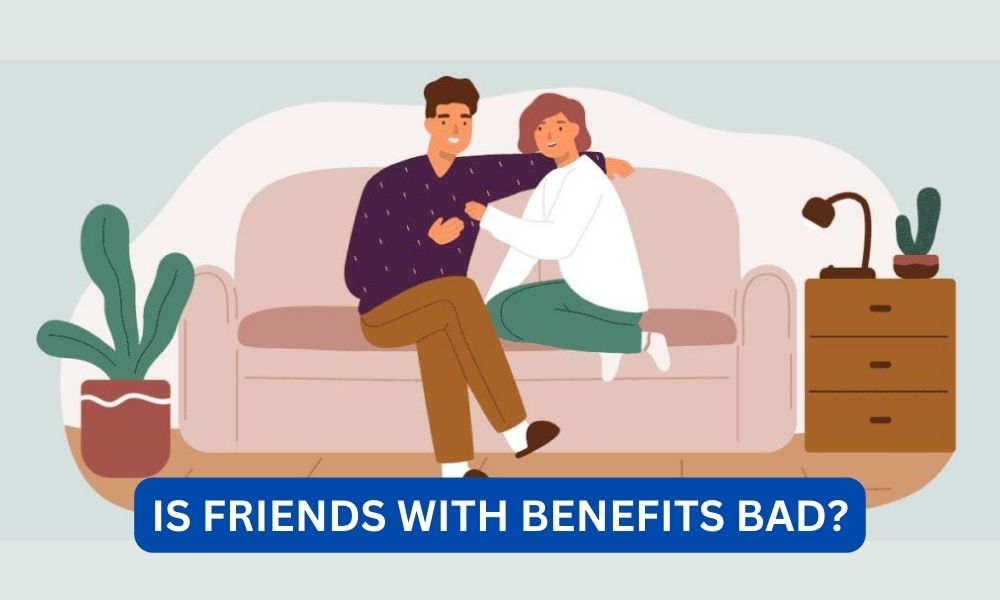Friends with benefits, or FWB, is a type of relationship where two individuals engage in sexual activities without any commitment or expectations of a romantic relationship. This arrangement has become increasingly popular in modern society, with many people opting for this type of casual and non-committal relationship. However, there is a constant debate on whether friends with benefits is a good or bad idea. In this article, we will explore the pros and cons of friends with benefits and provide valuable insights to help you make an informed decision.
Contents
The Pros of Friends with Benefits
- No strings attached: One of the main advantages of friends with benefits is the lack of commitment and expectations. Both parties are free to engage in sexual activities without any pressure to define the relationship or make long-term plans. This can be appealing for individuals who are not ready for a serious commitment or are simply looking for a casual and fun arrangement.
- Exploring sexuality: Friends with benefits can be a safe and comfortable way to explore one’s sexuality. Since there is no emotional attachment, individuals can freely communicate their desires and experiment with different sexual activities without any fear of judgment or rejection.
- Convenience: In today’s fast-paced world, many people struggle to find time for a committed relationship. Friends with benefits can provide a convenient solution for individuals who have busy schedules or are not looking for a serious commitment. They can enjoy the benefits of a relationship without the time-consuming responsibilities.
- Emotional support: Despite the lack of commitment, friends with benefits can still provide emotional support and companionship. The individuals involved in this type of relationship are usually friends, which means they have a strong bond and can rely on each other for emotional support and advice.
- Learning from each other: Friends with benefits can also be a great way to learn from each other. Since there is no pressure to impress or maintain a certain image, individuals can be their true selves and learn from their partner’s experiences and perspectives.
The Cons of Friends with Benefits
- Emotional attachment: One of the biggest drawbacks of friends with benefits is the risk of developing emotional attachment. Despite the initial agreement of keeping things casual, it is common for one or both parties to develop feelings for each other. This can lead to confusion, hurt feelings, and even the end of the friendship.
- Communication issues: Friends with benefits requires open and honest communication to ensure that both parties are on the same page. However, this can be challenging as individuals may not want to discuss their feelings or expectations for fear of ruining the arrangement. This can lead to misunderstandings and conflicts.
- Jealousy and competition: Since friends with benefits is a non-exclusive relationship, there is always a risk of jealousy and competition. If one party starts seeing someone else, it can cause feelings of jealousy and insecurity in the other party, leading to tension and conflicts.
- Sexual health risks: Engaging in sexual activities with multiple partners, even in a friends with benefits arrangement, can increase the risk of sexually transmitted infections (STIs). It is essential for both parties to practice safe sex and get tested regularly to ensure their sexual health.
- Impact on future relationships: Friends with benefits can also have a negative impact on future relationships. If one or both parties develop feelings for each other, it can be challenging to transition into a committed relationship. Moreover, if one party starts dating someone else, it can create trust issues and insecurities in future relationships.
Real-Life Examples
To better understand the pros and cons of friends with benefits, let’s look at two real-life examples:
Read:How to restart suspended social security benefits?Example 1: Sarah and John have been friends for years and have always had a strong physical attraction towards each other. They decide to become friends with benefits, agreeing to keep things casual and not develop any emotional attachment. However, after a few months, Sarah starts developing feelings for John and wants to take their relationship to the next level. John, on the other hand, is not ready for a committed relationship, leading to tension and the end of their friendship.
Example 2: Mark and Emily have been friends with benefits for over a year and have a great understanding of each other’s needs and boundaries. They communicate openly and regularly check in with each other to ensure they are on the same page. However, when Emily starts dating someone else, Mark becomes jealous and starts acting possessive, causing tension and conflicts in their arrangement.
These examples highlight the potential risks and challenges of friends with benefits, such as developing feelings, jealousy, and communication issues. However, they also show that with open communication and mutual understanding, friends with benefits can work for some individuals.
Statistics on Friends with Benefits
According to a study by the Kinsey Institute, 50% of college students have been in a friends with benefits relationship at some point in their lives. Additionally, a survey by Match.com found that 47% of singles have had a friends with benefits arrangement, with 20% of them leading to a committed relationship.
Read:what is acp benefitsThese statistics show that friends with benefits is a common and popular arrangement, especially among young adults. However, it also highlights the potential risks and challenges that come with this type of relationship.
How to Make Friends with Benefits Work
While friends with benefits may not be the right choice for everyone, it can work for some individuals if they approach it with the right mindset and take certain precautions. Here are some tips to make friends with benefits work:
- Be honest and communicate openly: It is crucial to be honest about your feelings and expectations from the beginning. Communicate openly and regularly to ensure that both parties are on the same page.
- Set boundaries: It is essential to set boundaries and stick to them. This can include not spending the night, not introducing each other to friends and family, and not engaging in romantic activities.
- Practice safe sex: As mentioned earlier, friends with benefits can increase the risk of STIs. It is crucial to practice safe sex and get tested regularly to ensure the sexual health of both parties.
- Be prepared for the end: Friends with benefits arrangements usually have an expiration date. It is essential to be prepared for the end and not let it affect the friendship.
- Don’t expect it to turn into a relationship: While some friends with benefits arrangements may lead to a committed relationship, it is not the norm. It is essential to keep your expectations in check and not expect it to turn into something more.
Conclusion:
Read:how to sign up for social security benefitsFriends with benefits can be a tempting and convenient arrangement for individuals who are not ready for a committed relationship or are simply looking for a casual and fun experience. However, it is essential to consider the pros and cons and communicate openly with your partner to ensure that both parties are on the same page. While friends with benefits may not be the right choice for everyone, it can work for some individuals if approached with the right mindset and precautions. Ultimately, it is up to each individual to decide if friends with benefits is a good or bad idea for them.









